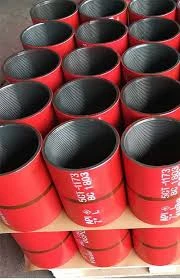- Afrikaans
- Albanian
- Amharic
- Arabic
- Armenian
- Azerbaijani
- Basque
- Belarusian
- Bengali
- Bosnian
- Bulgarian
- Catalan
- Cebuano
- Corsican
- Croatian
- Czech
- Danish
- Dutch
- English
- Esperanto
- Estonian
- Finnish
- French
- Frisian
- Galician
- Georgian
- German
- Greek
- Gujarati
- Haitian Creole
- hausa
- hawaiian
- Hebrew
- Hindi
- Miao
- Hungarian
- Icelandic
- igbo
- Indonesian
- irish
- Italian
- Japanese
- Javanese
- Kannada
- kazakh
- Khmer
- Rwandese
- Korean
- Kurdish
- Kyrgyz
- Lao
- Latin
- Latvian
- Lithuanian
- Luxembourgish
- Macedonian
- Malgashi
- Malay
- Malayalam
- Maltese
- Maori
- Marathi
- Mongolian
- Myanmar
- Nepali
- Norwegian
- Norwegian
- Occitan
- Pashto
- Persian
- Polish
- Portuguese
- Punjabi
- Romanian
- Russian
- Samoan
- Scottish Gaelic
- Serbian
- Sesotho
- Shona
- Sindhi
- Sinhala
- Slovak
- Slovenian
- Somali
- Spanish
- Sundanese
- Swahili
- Swedish
- Tagalog
- Tajik
- Tamil
- Tatar
- Telugu
- Thai
- Turkish
- Turkmen
- Ukrainian
- Urdu
- Uighur
- Uzbek
- Vietnamese
- Welsh
- Bantu
- Yiddish
- Yoruba
- Zulu
Understanding API Casing Sizes for Efficient Oil and Gas Applications
Understanding API Casing Sizes A Comprehensive Guide
The oil and gas industry is characterized by its complexity and the necessity for precision in various processes, one of which involves the use of drilling casings. API casing sizes are critical for ensuring the safety and efficiency of drilling operations. In this article, we will delve into the significance of API casing sizes, the standards set by the American Petroleum Institute (API), and the various factors that influence the selection of the right casing size for a drilling project.
What is API?
The American Petroleum Institute (API) is a leading authority in the oil and natural gas sector. Established in 1919, it has been instrumental in setting standards that ensure the safety, efficiency, and environmental protection of drilling operations. API provides a series of specifications, guidelines, and recommended practices regarding drilling equipment, including casings.
What are Casing Sizes?
Casing refers to the series of pipes that are installed in a well to support its walls and prevent collapse, as well as to isolate fluids in the subsurface. Casing sizes are defined by their Outer Diameter (OD), Wall Thickness, and Weight per Length. The dimensions and specifications of these pipes are crucial for their functionality, as they need to withstand various pressures and conditions encountered during drilling.
API Casing Sizes
API casing sizes are categorized into several types, including 1. Surface Casing This is the first casing that is installed. It protects the aquifers and the environment from contamination and supports the drilling of deeper wells. 2. Intermediate Casing This casing is used to provide additional support and protect the wellbore from collapse. It is installed after the surface casing. 3. Production Casing This is the last casing installed and is used to manage production from the well. It extends to the bottom of the well and has specific diameters designed to protect the area from various pressures generated during production.
api casing sizes

API establishes standardized casing sizes, beginning from 4.5 inches up to 20 inches in diameter for different applications. Each size is associated with different weights, measured in pounds per foot (lbs/ft), which affects the casing’s ability to bear loads and pressures encountered when drilling.
Factors Influencing Casing Size Selection
1. Well Depth and Pressure The deeper the well, the greater the pressure and the more robust the casing needs to be. Selecting a casing size that can withstand the anticipated pressures is crucial for preventing failure during drilling operations.
2. Formation Types The geological characteristics of the formation being drilled into also impact casing size selection. Softer formations may require different casing strategies compared to harder, more abrasive formations.
3. Fluid Composition The types of fluids present in the well can influence the choice of casing material and size. For example, corrosive fluids may necessitate the use of specialized casings that provide enhanced resistance to chemical degradation.
4. Regulatory and Safety Standards Compliance with industry standards, including those set forth by the API, is a significant factor. These standards dictate minimum requirements for casing sizes to ensure the safety of drilling operations.
Conclusion
In conclusion, understanding API casing sizes is integral to the success of drilling operations in the oil and gas industry. The standardized casing sizes provided by the API help ensure that operations are conducted safely and efficiently, minimizing the risk of well failures and environmental contamination. By considering factors such as well depth, geological formation, fluid composition, and regulatory requirements, operators can select the most suitable casing size for their specific drilling project. As the industry continues to evolve, maintaining an adherence to these standards will remain paramount in ensuring operational success and safety.
-
Tubing Pup Joints: Essential Components for Oil and Gas OperationsNewsJul.10,2025
-
Pup Joints: Essential Components for Reliable Drilling OperationsNewsJul.10,2025
-
Pipe Couplings: Connecting Your World EfficientlyNewsJul.10,2025
-
Mastering Oilfield Operations with Quality Tubing and CasingNewsJul.10,2025
-
High-Quality Casing Couplings for Every NeedNewsJul.10,2025
-
Boost Your Drilling Efficiency with Premium Crossover Tools & Seating NipplesNewsJul.10,2025







